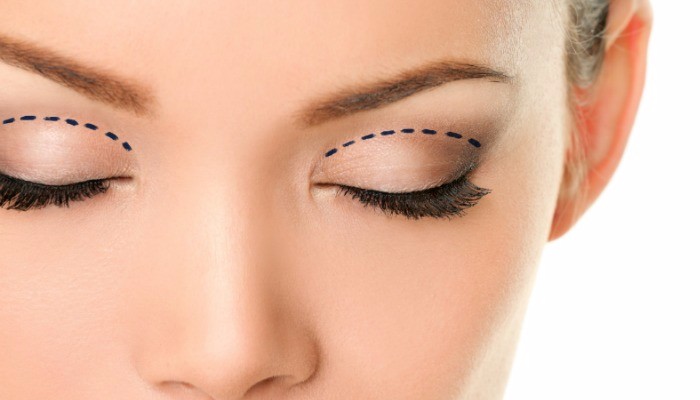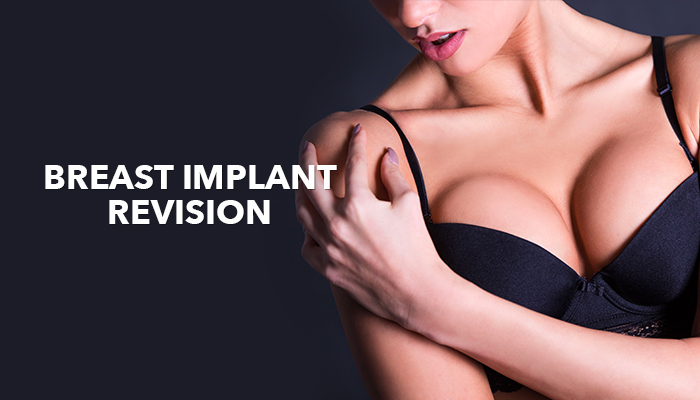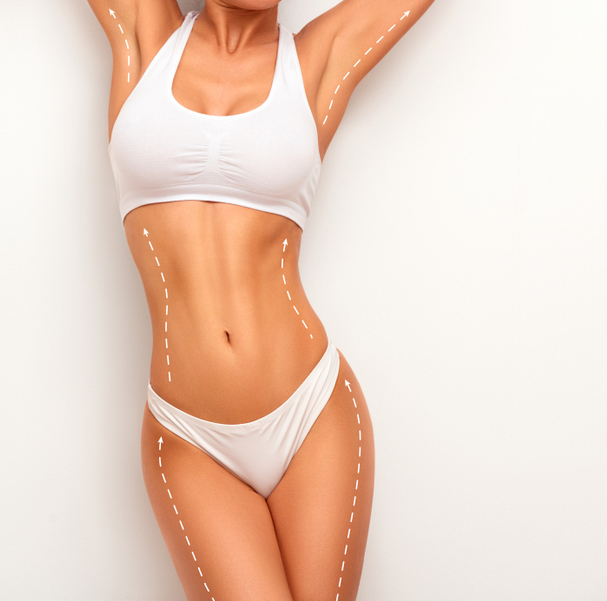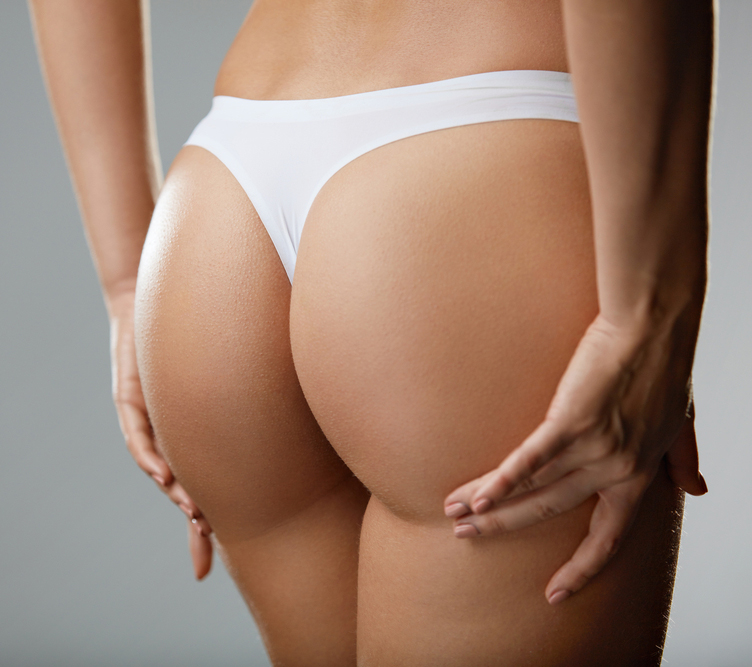
The aging process causes many changes in the periocular area. In the upper eyelid, it is mainly characterized by an excess and sagging of the eyelid skin. This change causes an aesthetic alteration, but in some cases it can also cause an alteration of the patient’s field of vision and lead to eye fatigue.
Another condition associated with aging is the presence of ptosis (eyelids drooping), produced by laxity of the fibers of the levator muscle of the upper eyelid.
The most common condition that patients want to treat with eyelid surgery is droopy eyelids, also called “blepharoplasty” or “eye lift,” which removes and tightens excessive eyelid skin for a more alert, youthful appearance.
Usually, with aging, the lower eyelid becomes lax because of the changes in the fibrous-tendinous structures. At first, the orbital fat (which occupies the most of the orbit) herniates forward, becoming visible through the skin, which is colloquially known as “bags.” And, in second place, it stretches the skin and tendons of the orbicular eyelid muscle, resulting in wrinkles, folds, and lowering eyelids down.
What is an eyelid surgery or blepharoplasty?
An eyelid surgery, also called blepharoplasty, is a surgery that helps to recover a youthful appearance in the eyelids by tightening the skin and tissues at the edges of the eyes. The surgery may be used on the upper or lower lids, or both. Sometimes blepharoplasty can also improve the patient’s vision by providing a less obstructed field of view.
With blepharoplasty, the plastic surgeon can remove excessive skin, muscle, or fat tissue from the eyelids. The patient might need only skin removal, but not muscle removal, or he/she might need the procedure to be done on both upper and lower eyelids. Some people confuse eyelid surgery with upper eyelid ptosis surgery, but they are not the same thing; an eyelid ptosis surgery lifts the border (especially of the upper eyelid) by recovering the normal form of the muscles and tendons that elevate it; during this procedure, the plastic surgeon does not eliminate excessive skin and fat tissue.
Blepharoplasty may elevate the eyelid border if the cause of droop is heavy with excessive skin.
In some cases, the problem seems to be the eyelids, but the real problem is in the forehead skin and eyebrows. If the patient wants to improve his/her appearance or is having functional problems with his/her eyelids, this procedure can make the area around his or her eyes look younger. Remember that the eyelids are part of the face.
This surgery may correct conditions such as the following:
– The excessive and sagging skin may be so much that it can decrease the patient’s vision.
– The appearance of puffiness, especially in the low eyelid, due to an excess of fat tissue.
-The drop in the lower eyelids, which makes the patient’s sclera to be shown more than usual.
The surgery can help to eliminate the wrinkles in the eyelid with the cut skin.
Who is an ideal candidate for eyelid surgery?
An ideal candidate is a physically healthy patient without diseases that may impair healing or any serious eye conditions, a patient with realistic expectations, and a patient that only desires to remove the excessive skin, wrinkles, and fat from the eyelids. This is more common in patients 35 years of age and older, but if droopy eyelids are common in his/her family, it may be done earlier.
The plastic surgeon should evaluate the patient’s anatomy thoroughly to discover the causes of the eyelids dropping, and to determine what procedures might be the best remedy for them.
What is the difference between cosmetic and functional blepharoplasty?
A cosmetic blepharoplasty is a surgical procedure that is only performed to improve the patient’s appearance (the patient has no medical indications), while a functional blepharoplasty is eyelid surgery that the patient needs due to medical problems.
These medical reasons may include: eyelids drooping so much that the grade of the drop is high and diminishing the patient’s vision; the excessive skin makes it difficult to wear glasses or even use contact lenses in one or both eyelids; irritation in the eyelids, caused by excessive rubbing between the eyelids or between the eyelids and the forehead skin; or discomfort or tiredness from the effort required to maintain the sagging eyelid skin above the field of vision.
What should the patient do before a blepharoplasty?
During the consultation, the patient should discuss with the plastic surgeon his/her surgical goals and his/her complete medical record, including all previous diseases, allergies, and previous medical treatments, and specifically any problems he/she has had with his/her eyes.
The surgeon should evaluate the patient’s general health condition and determine potential risk factors; he/she will discuss eyelid surgery options to recommend both a course of treatment and likely outcomes of eyelid surgery, as well as any potential risks.
The patient may need to undergo some lab tests, adjust his/her medications, not smoke or take drugs that may promote bleeding, and should not wear makeup of any kind on the day of surgery.
What is the general procedure of a blepharoplasty?
A blepharoplasty is considered a minor surgery, so it can be performed in either the plastic surgeon’s office or in a hospital. Usually, the procedure lasts from one to three hours, and the patient can be under local or general anesthesia. While the patient is lying down during blepharoplasty, the surgeon will make precise markings to show where excessive skin and fat pads need to be removed.
When the plastic surgeon approaches the upper eyelid, he/she creates an incision along the natural crease of the eyelid, and through it the plastic surgeon can eliminate fat tissue, tighten the muscles, and even cut excess skin.
During this procedure, two incisions may be used by the plastic surgeon—one in the lash line, and the other inside the eyelid (commonly called trans-conjunctival). With these incisions, the plastic surgeon can remove or reposition the excess skin and the fat of the lower eyelid.
On the other hand, the trans-conjunctival incision eliminates excessive eyelid tissue with non-visible scars (concealed within the natural structures of the eyelid region); this is also used to correct lower eyelid skin and fat. With this technique, no skin is removed.
During the procedure, the surgeon will make judgments about how much skin, muscle, and/or fat should be removed based on a preoperative evaluation of factors such as the patient’s underlying facial muscle structure, bone structure, and symmetry of his/her eyebrows.
The plastic surgeon may combine this technique with laser resurfacing or carbon dioxide (CO2), improving the skin of the face in general, which at the same time allows the surgeon to eliminate any lines or wrinkles that may remain in the operated area. The plastic surgeon closes the incisions in this procedure with removable sutures; however, he/she also can use other methods.
In some cases, the plastic surgeon will recommend combining the eyelift with a brow lift, especially when the eyebrows are sagging.
What is the postoperative care?
In most cases, the patient can go home the day of surgery, but he/she will need to arrange for another person to drive him/her home after the surgery. The patient should also have someone stay with him/her the night of the procedure.
Before the patient leaves, the doctor or nurse will cover his/her eyes and eyelids with ointment and a bandage. The patient may feel the eyelids to be sore and heavy as secondary effects of sedation; however, this is easily manageable with oral painkillers.
The patient should keep his or her head raised as much as possible for several days. He/she should place cold packs over the area to reduce swelling and bruising, but should make sure to wrap the cold pack in a towel before applying it (this helps to prevent cold injury of the eyes and skin).
During the first days, it is recommended to use cold packs over the treated area in sessions of 10 or 15 minutes. This helps to reduce swelling and bruising. However, after 48 hours, the patient should change out the cold compresses for warm compresses.
The plastic surgeon should know if the patient suffers from dry eye because in this case, to avoid worsening the condition, he or she can’t remove large amounts of tissue. This is also a common side effect. The doctor may recommend eye drops to reduce burning or itching, but if this symptom is lasting more than two weeks, the patient should contact his or her doctor.
In most cases, the plastic surgeon uses absorbable sutures, so the stitches dissolve by themselves. But when the plastic surgeon needs to use non-dissolving sutures, they may be cut in approximately in 7 days.
Commonly, the patient is able to see well after 2 to 3 days, but should not wear contact lenses for at least 2 weeks. It is recommended to keep activities to a minimum for 3 to 5 days, and avoid strenuous activities for at least 3 weeks.
The doctor will remove the stitches 2 to 7 days after surgery. The patient will have some bruising, which may last 2 to 4 weeks. In some cases, he/she may notice lacrimation, feeling the skin to be sensitive, and blurred vision, but these symptoms should disappear during the first weeks.
Likewise, it is important for the patient to use a topical antibiotic in the form of ointment or drops; in some cases, the plastic surgeon may suggest eye patches. Some creams and moisturizers can be prescribed to help reduce bruising and other undesirable changes in the treated skin. The doctor will provide all relevant recommendations to the patient and will also prescribe painkillers if needed; usually, though, the patient can control the pain with non-prescription painkillers. If the patient experiences severe pain or changes in quality of vision, he/she should call his/her plastic surgeon immediately.
During recovery, the eyes may be swollen and red, especially during the first days after the procedure; the sclera may also become red. Total recovery can take weeks, and during this period of time it is prohibited to use eye makeup.
Contact lenses may be used as soon as the patient does not feel discomfort using them, and if he/she wears eyeglasses, he/she can put them on any moment after the procedure, as long as they are careful.
Regarding the results, most patients who undergo a blepharoplasty are satisfied with the results in both cosmetic and functional cases. The patient’s self-image and field of vision improve significantly.
What are the results of a blepharoplasty?
Scars may remain slightly pink for 6 months or more after surgery, but they tend to disappear to a thin or invisible line with time. In most cases, the results of the surgery are permanent.
How much does a blepharoplasty cost?
The average cost of eyelid surgery, according to 2014 statistics from the American Society of Plastic Surgeons, is $2,874, but blepharoplasty costs can vary widely with the added costs of anesthesia, operating room facilities, and other related expenses.
When the eyelid surgery obeys medical conditions (functional), it may be covered by some insurances.
What are the risks or possible complications of a blepharoplasty?
One of the potential complications of the surgery is the incapacity to close the eyes (the eyelids are very short), this prevents the ability to lubricate the
eyes, so they become very dry; this may be controlled with eye drops or taping the eyes closed during the night (to lubricate them), and this condition is commonly resolved in a few months. When this condition is present for more than 3 months, the plastic surgeon may perform an additional surgery to restore the eyelids, allowing them to close completely.
Other potential (less common) risks of the surgery include: retrobulbar hemorrhage (which can cause loss of vision), infection, changes in the vision quality, noticeable scars, shoddy eyelids, undercorrection (leaving excessive skin), overcorrection (eliminating too much skin), sensitivity to sun or other bright light, ectropion (an outward rolling of the eyelid), and numbness.
There are some medical conditions that can make blepharoplasty riskier, such as diabetes, dry eye or not enough tear production, heart diseases or disorders of the blood vessels, high blood pressure or other circulatory disorders, and thyroid problems such as hypothyroidism and graves disease.
Dr. Amjadi MD, DDS, FACS
Certified by the American Board of Plastic Surgeons
915 Gessner Rd #870
Houston, TX 77024
713-465-6198













